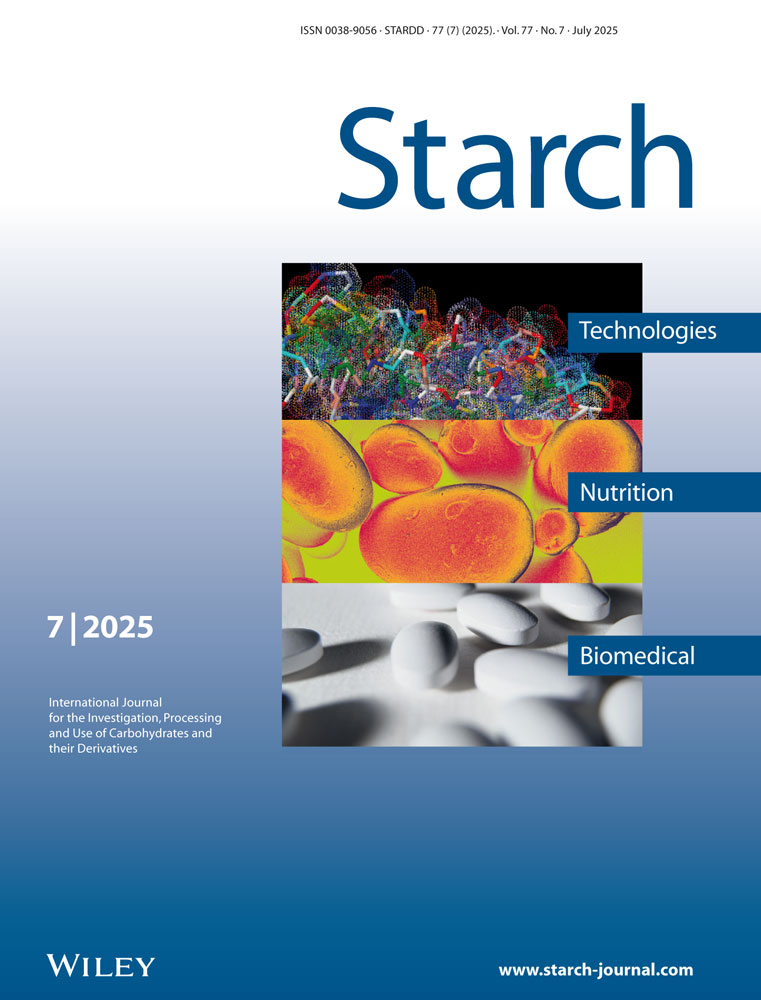Determination of the Botanical Origin of Starches Using Iodine Reaction and Fuzzy Set Theory
Abstract
enThe method of spectrophotometric titration (vȧriant B) of strach polysaccharides with iodine (determination of the extinction of the starch-iodine complex at two iodine concentrations and four wavelengths, 714nm, 625nm, 555nm and 500nm) is used to obtain 6 R parameters (measured value quotient from two wavelengths) and 6 D parameters (difference of the R parameter at the two iodine concentrations). These parameters are distinguishable depending on the botanical source of the starch. In order to assess the R and D parameters, the scaled measured values of 11 standards (potato, tapioca, pea, bean, maize, wheat, wheat-B, rye, barley, oat and rice starches) were changed in three linguistical variables “small”, “middle” and “large” and for every starch a IF/THAN rule was formulated. Using a software, which allows the linguistical data to be converted according to the principle of fuzzy set theory and a computer program BOTSTA was devised. The fuzzy sets obtained with this program are dependent on the botanical origin. The program BOTSTA was tested in four German potato starch factories and six european maize starch factories.
Abstract
deBestimmung der botanischen Herkunft von Stärken mittels Iodreaktion und Fuzzy-Set-Theorie.
Die Methode der spektralphotometrischen Titration (Variante B) von Stärkepolysacchariden mit Iod (Bestimmung der Extinktion der Stärke-Iodkomplexe bei zwei Iodkonzentrationen und 4 festen Wellenlängen 714nm, 625nm, 555nm und 500nm) wird benutzt um 6 R-Parameter (Meßwertquotient aus zwei Wellenlängen) und 6 D-Parameter (Differenz der R-Parameter bei zwei Iodkonzentrationen) zu erhalten. Diese Parameter unterscheiden sich in Abhängigkeit von der botanischen Herkunft der Stärke. Zur Beurteilung der R- und D-Parameter werden die skalaren Meßwerte von 11 Standards (Kartoffel-, Tapioka, Erbsen-, Bohnen-, Mais-, Weizen-, Weizen-B-, Roggen-, Gersten-, Hafer- und Reisstärke) in drei linguistische Variablen „klein”︁, „mittel”︁ und „groß umgewandelt und für jede Stärke eine WENN/DANN-Regel formuliert. Unter Verwendung einer Software die linguistische Daten nach dem Prinzip der Fuzzy-Set-Theorie verarbeiten kann wird das Computer-Programm BOTSTA erstellt. Die mit diesem Programm erhaltenen Fuzzy-Sets der Standardstärken sind abhängig von der pflanzlichen Herkunft. Das Programm BOTSTA wird mit Stärken aus 4 deutschen Kartoffelstärkefabriken und 6 europäischen Maisstärkefabriken getestet.




